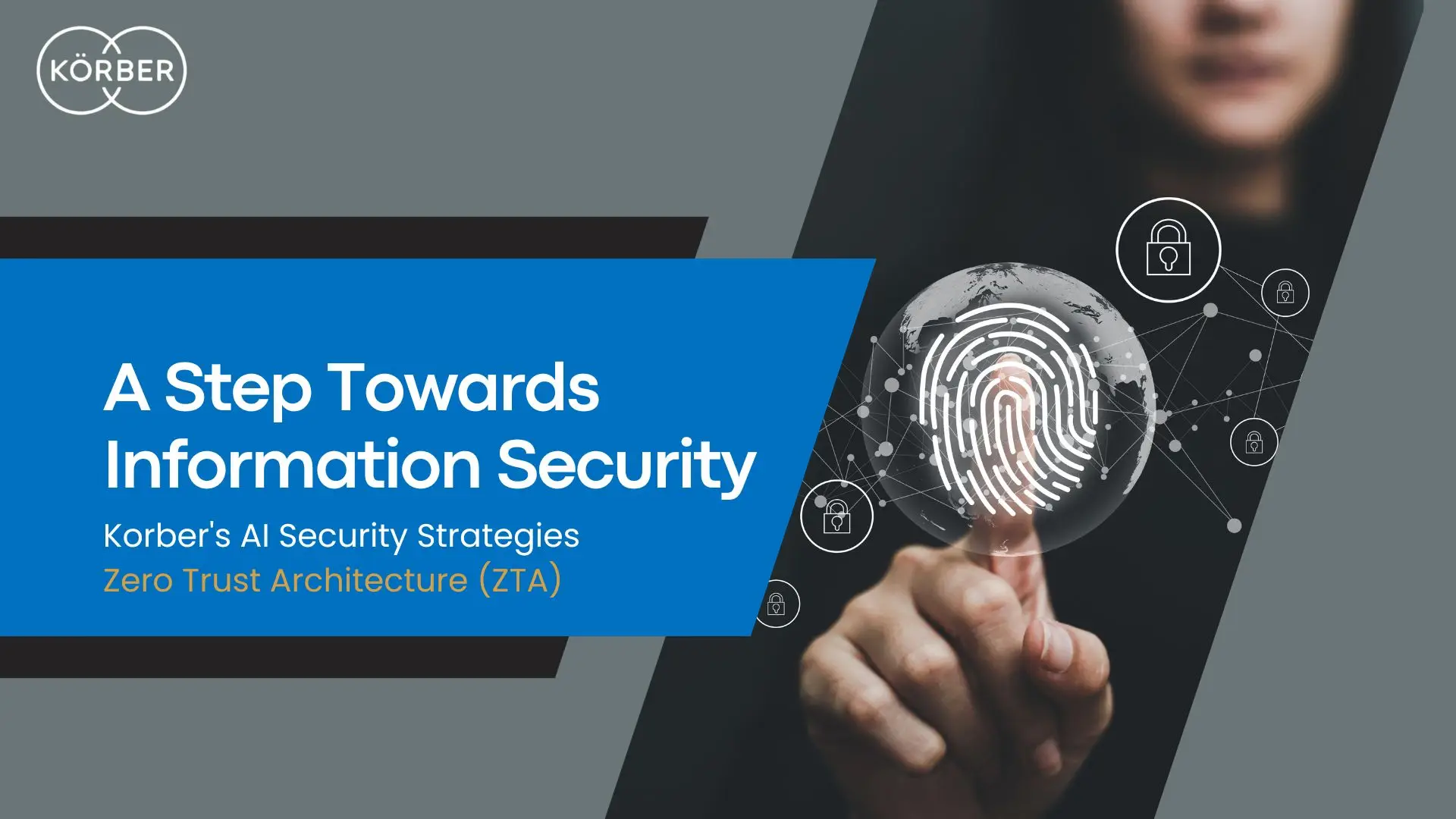The complexity of technology only increases with each advancement. It opens the world to a plethora of opportunities and endless possibilities. As we advance and move towards a world where all technology runs on AI, we must acknowledge that AI can be a boon and a bane. The most significant risk we expose ourselves to is data and information security. Businesses, hence, must invest in the right cybersecurity frameworks to protect their most prized asset- data. This blog explores the Zero Trust Architecture security framework adopted by Korber as a step toward greater information security.
Zero Trust Architecture (ZTA)
Korber uses Zero Trust Architecture, a security framework based on “always verify, never trust.” This model operates on the assumption that potential threats can emanate from any source, whether internal or external to the network. It necessitates rigorous verification for every access request.
Here is how it works:
Identity Verification:
Before accessing resources, both users and devices are required to authenticate their identities using robust methods such as Multi-Factor Authentication (MFA).
Least Privilege Access:
Access is authorized by the principle of least privilege, which guarantees that both users and applications have access only to the resources required for their operations.
Micro-segmentation:
Networks are subdivided into smaller segments to mitigate potential breaches, thus restricting horizontal movement by segregating workloads and implementing detailed access controls.
Continuous Monitoring and Analytics:
Continuously observes and evaluates user and device activities to identify irregularities and potential security risks. It encompasses monitoring login trends, data access patterns, and network traffic.
Policy Enforcement:
The application, data, and network levels all have security policies in place. These policies determine who can access which resources and under what circumstances, and they are applied consistently throughout the entire system.
Data Encryption:
Data is securely encrypted while stored and during transmission to safeguard sensitive information from unauthorized access and potential breaches.
Device Security Posture:
Evaluate and verify that devices connecting to the network comply with security requirements, including having up-to-date software, absence of known vulnerabilities, and a secure setup.
Automation:
Automate the response to identified threats and standardize the implementation of security protocols to ensure efficient and uniform application across the network.
Benefits:
Enhanced Security: It Reduces the risk of breaches by continuously verifying access and limiting privileges.
Reduced Attack Surface: ZTA also limits the spread of potential breaches through micro-segmentation and least privilege access.
Improved Visibility: It gives a better understanding of network activity and possible threats.
Compliance: It facilitates compliance with data protection and security regulations.
Flexibility: It adapts to ever-changing IT settings such as cloud and remote work arrangements.
Korber’s adoption of the Zero Trust Architecture (ZTA) gives us a glimpse of what technology and AI in the domain of security has to offer. In a world where we are constantly upgrading, our contact with associated risks also increases. In our next blog we will delve deeper into yet another security framework- Extended Detection and Response solution.
Reach out to marketing@tychons.com for implementation, upgrades, customizations, and enhancements for your new or existing WMS System!

